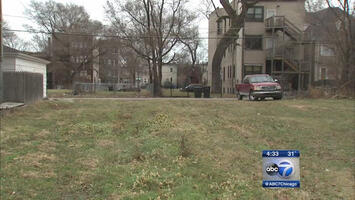
Here’s part 2 in the “Tottering Chicago?” series. We’re moving on to the second question I raised after reading William Voegeli’s That Tottering Town, a review of the book What Next, Chicago? Notes of a Pissed Off Native Son. (Read part 1 here.)
Is population growth the best single variable to gauge city health?
The midsection of William Voegeli’s piece goes to great lengths to show that Chicago’s population has been in decline for almost all of the last 70 years. Here’s a sample:
"We can begin to consider Rosenberg’s diagnosis, prognosis, and prescriptions by unpacking one of the most important statistics he offers: Chicago’s population peaked in 1950, when 3,620,962 people lived there. By 2020 it had declined to 2,746,388. Though What Next, Chicago? lets this fact speak for itself, the two numbers are in some ways worse and in others better than they seem. The bad news is that while Chicago’s population was decreasing by 24%, America’s increased by 120%, from 150,697,361 in 1950 to 331,449,281 in 2020. Measured as a proportion of the U.S. population, Chicago declined by 65% over seven decades, from 2.39% of the national population to 0.83%. To put it differently, one out of every 42 Americans lived in Chicago in 1950. (Were that still the case today, the city’s population would be over 7.9 million.) By 2020, that figure had fallen to one out of 121."
I understand the point Voegeli’s trying to make – Chicago’s population didn’t just drop in absolute terms, it dropped in relative terms when compared to the rest of the nation. In a sense, he’s counting the people who left Chicago for other places, and the people who didn’t even give a second thought to moving there. Chicago, in his opinion, lost its attraction, just as other Rust Belt cities did – cities like Buffalo, Pittsburgh, Cleveland, Detroit and St. Louis. By contrast, Phoenix was 15 times larger in 2020 compared to 1950, growing from 107,000 to 1.6 million. Poor Houston only quadrupled in size over the same period, rising from 596,000 to 2.3 million.
To him, Chicago’s failure to keep pace with other cities demonstrates a lack of desirability and a lack of effort to counter the negative perception, even as nearly exponential growth occurs elsewhere. Yet no one stops to think of how technology, quality of life standards and simple demographics has made more places that were once considered unreachable into easily reachable destinations.
Can established cities truly be compared to emerging cities? No. And here’s why.
Technology. Over the last 70 years our notion of where we could live and work has expanded because of technological advances. Houston and Phoenix have been physically linked to each other via Interstate 10 since 1957, with the construction of the Interstate Highway system. I-10 stretches uninterrupted from Jacksonville, IL to Los Angeles and gives all the cities along its length a greater connection with each other. Triple-digit heat in the desert Southwest and stifling humidity on the Gulf Coast have been tamed by the spread of central air conditioning in every single building. Cheap and frequent air travel has effectively condensed the nation. There is simply just much more available spaces to live comfortably in America in 2020, compared to 1950.
Quality of life standards. Americans have always had a fascination with new things compared to older ones, and over the last 70 years we’ve witnessed a continual expansion of new home features, new homes, new communities, even new cities. Americans have done what they’ve always done and followed the path to something new, whether in the suburbs or heretofore unavailable locations in the South and West.
Of course, accepting the new usually means abandoning the old. People made the choice to move to areas with more space, greener lawns, wider streets, warmer climates and a more comfortable pace of life. Everything about the new suburbia and Sun Belt was the antithesis of the nation’s Northeastern and Midwestern cities (I will add however that after 2-3 generations of people growing up in suburbia and the Sun Belt, cities increasingly came to be seen as the new “new” alternative living standard, fueling the comeback of cities over the last 30-40 years. What was old was new again.).
Read the rest of this piece at Corner Side Yard Blog
Pete Saunders is a writer and researcher whose work focuses on urbanism and public policy. Pete has been the editor/publisher of the Corner Side Yard, an urbanist blog, since 2012. Pete is also an urban affairs contributor to Forbes Magazine's online platform. Pete's writings have been published widely in traditional and internet media outlets, including the feature article in the December 2018 issue of Planning Magazine. Pete has more than twenty years' experience in planning, economic development, and community development, with stops in the public, private and non-profit sectors. He lives in Chicago.
Photo: courtesy Corner Side Yard Blog












